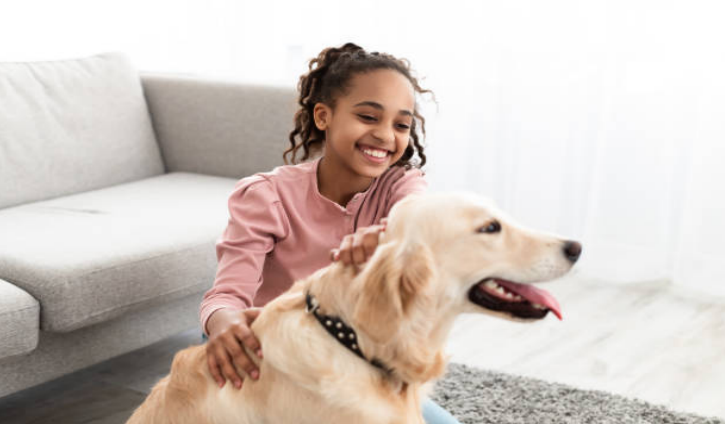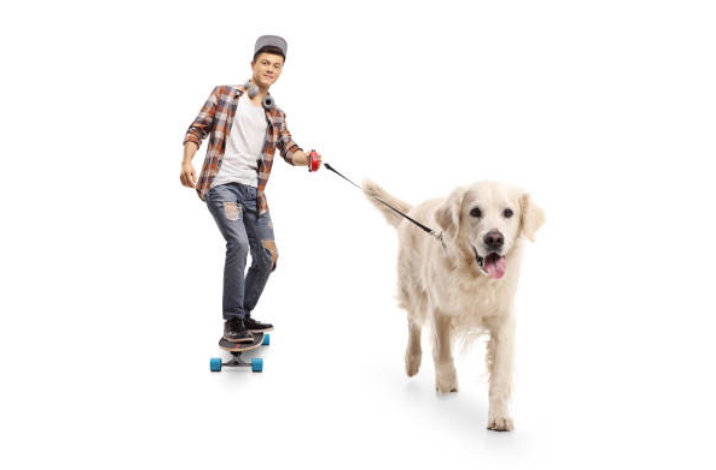Apr 24, 2025
Author:Lisa Martinez
Just like humans, dogs go through an awkward, rebellious, and often misunderstood phase — adolescence. This period, typically between 6 to 18 months of age (though it varies by breed), is when your once-sweet puppy suddenly forgets all their training, ignores commands, and seems to have boundless energy paired with selective hearing.

If you’ve ever stood in your backyard yelling “come” while your teenage pup bolts in the other direction, you’re not alone. At this stage, you need to know about adolescence in dogs and how to handle your pet in its teenage years.
Adolescence in dogs is a biologically regulated developmental phase characterized by substantial endocrine, cognitive, and behavioral alterations. It typically commences at around 6 months and may last for as long as 18–24 months, depending on breed and size — the larger breeds matureting more slowly than the smaller breeds.
In a study by Newcastle University and the University of Nottingham (2020), young dogs show an 8-month peak in conflict behavior, with them refusing commands from known people but responding well to strangers. This is in line with human teenagers' tendency to be rebellious. Scientists noted that these dogs at this age had poorer obedience scores and tended to resist authority, particularly from their main caregivers.
Along with changes in behavior, teenage dogs go through a second fear phase — between 6 and 14 months — when they may suddenly develop fears for things they were once at ease with. It is all part of rewiring their brains as they develop from dependency to independence.
Veterinarians and dog behaviorists stress that adolescence is among the most important periods for persistent training, positive reinforcement, and tolerance. These natural behaviors, when not understood, can mistakenly be interpreted as disobedience or aggression. For this reason, as much as 70% of the behavioral problems brought to trainers are dogs younger than 2 years old, the American Veterinary Society of Animal Behavior maintains.
Knowing that your dog isn't being "naughty" but just maturing can alter how you react — and set the two of you up to survive this phase with an even deeper, more trusting bond.

As per a 2020 study in Biology Letters, teen dogs show higher conflict behavior towards their main caregivers, just like teenagers with parents. Indeed, dogs that were about 8 months old were less obedient to their owners' commands but more attentive to strangers — a pattern also observed in teen humans. A study revealed that behavioral problems are one of the most common reasons for pet relinquishment at this age, with 1 in 5 young dogs being given up because of "behavioral problems."
Your puppies are now reaching their first birthdays, and also adolescence - their equivalent of their difficult teenage years.
This is a trying time for your puppy. Understand how best to manage them as they grow from puppy to adult dog.
Adolescence is the transition from puppyhood to adulthood. In dogs, it may begin at any time between six and 12 months and end between 18 and 24 months. It is a period of dramatic hormonal change and reorganisation of the brain.
These hormonal shifts can cause young dogs to seem less compliant. What's actually occurring is they're becoming more and more stimulated to check things out, play and gallop around. They also need to get involved with their world and the individuals within it more.

Just like human teenagers, adolescent dogs have the energy and drive to do more. More exploring, more playing, more socializing with their peers (humans and animals!), but they do not yet possess the knowledge and experience to reflect on and organize their acts and responses.
Adolescent dogs are much more lively and interactive. They tend to get into trouble very easily when they're asked to cease whatever they're doing, or to just calm down. It even occurs in scenarios where they previously were 'obedient' and would obey immediately.
This type of change is usually misinterpreted by owners as the dog being stubborn or attempting to establish their dominance. Rather, it's their dog struggling with controlling their impulses.
Certain dogs, based on temperament (or character), can become frustrated when they are unable to obtain what they desire. As this is an unpleasant feeling, it will serve as a catalyst for negatively driven behaviours. This encompasses too much barking and irritating behaviour such as jumping up, scratching, nipping, biting the lead and even aggression.
It's no surprise that lots of owners see great changes in the behaviour of their dogs. Unfortunately, it's during this period that some puppies might be rehomed as a result of naughty behaviour. The positive thing is that adolescence is something which passes. We've brought together some top tips to see you through this tough 'teenage' phase.
Instead of thinking about how to manage an adolescent dog, we must consider how we can meet their physical and behaviour requirements.
Learning the teenage dog's ability is superior to that of adult dogs or puppies. The best you can do is channel some of their energy towards organized play and exercise sessions. You can play search games, scent puzzles and go for long walks in quiet places.
We also have to consider what we can do to avoid circumstances where our dog becomes more frustrated or excitable. One way that we can do this is by providing them with some activities prior to the event or by providing them with something to do which can assist them in dealing with frustration.
Dogs in general, and young dogs specifically, become frustrated when humans eat. Since they also want to eat and cannot join in, they will jump, bark and scratch. Reduce their frustration by feeding your pet first, then offering them something to chew or maybe a dog puzzle while you eat.
Not being able to get people's attention can also be frustrating, but predictability is the best way to prevent frustration. Try adding variety to interactive games in your dog's schedule. Play with a ball or with a frisbee, or hiding something that your dog must seek
Don't forget to provide cues about the beginning and end of playtime. For instance, you can say 'playtime' to the dog or reveal a toy. As you wish to stop, simply say 'finish' and fling the toy in the opposite direction, or take it away and provide your dog with something to keep them busy. This is handy in order to reduce frustration at the end of a fun activity. You can also spread out some treats or provide your dog with something pleasant to chew.
If your dog was familiar with playing with other dogs, but became too rowdy or even violent, scolding them off is exacerbating the issue. Instead, attempt to divert your dog's attention and leave the situation using a cheerful tone of voice instead of reprimand.
If your dog has dog friends, you can still socialise with the dogs they are familiar with. Limit their exposure to other dogs for a while though. Steer clear of repeated negative experiences around other dogs so that the problem does not escalate.
Teenage dogs are rambunctious! Longer, more peaceful walks, lots of discovery and just getting to smell everything with their nose are some of the most fulfilling activities for a dog. Some teenage dogs appear to grow more anxious and apprehensive. This is perhaps why they refuse to comply with owners' commands or even begin to exhibit behaviors like destructiveness, house soiling or barking.
It's absolutely essential that they're not chastised for their 'bad manners'. Scolding dogs, shouting or employing more physical techniques can frighten and intimidate dogs further and their behavior may deteriorate. For these kinds of situations, seek the help of a professional.
Tools like the WOpet Smart Feeder can help maintain structure in your dog’s daily routine, especially when you're not home. Regular, scheduled feedings reduce anxiety, promote healthy eating habits, and give dogs a sense of predictability — which is key during the unpredictable adolescent phase. Plus, with remote feeding and voice interaction features, it adds a layer of engagement that can comfort your pup and support overall behavior training.
If whatever you are doing isn't making any difference, it's a good idea to seek advice and help. Occasionally bad behavior is brought about by a health or medical issue. You need to have your pet checked with a vet to rule this out first. Then they can recommend that you seek out a behaviorist if necessary.
To sum up, if your adolescent dog seems to have lost his 'manners', think about how to provide more positive activities. Avoid exposing them to situations that may excite or frustrate them, avoid any kind of punishment and be patient. This phase will pass!
Dog adolescence isn't merely infuriating — it's a formative development period. Having insight into what your dog is experiencing can be the difference between deepening your relationship and straining it. Whether you're facing sudden defiance, destructive chewing, or novel phobias, knowing that it's all part of maturation allows you to greet your dog with patience, compassion, and consistency.
Label:
Popular Post

What to Feed a Sick Dog With No Appetite? [2025 Guide]
May 16, 2023

Troubleshooting Common Issues with Automatic Pet Feeders: Tips & Tricks for Pet Owners
Oct 26, 2023

Why Does My Cat Cough After Drinking Water? 8 Potential Reasons
Mar 13, 2023

My Cat Only Eats A Little at A Time - What to Do?
Feb 27, 2023

Why is My Cat Throwing up Water? Top 5 Causes Here
Feb 08, 2023
$99.99
$129.99
Copyright © 2025 WOPET. All Rights Reserved.